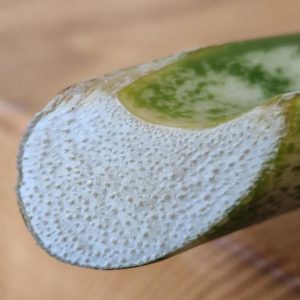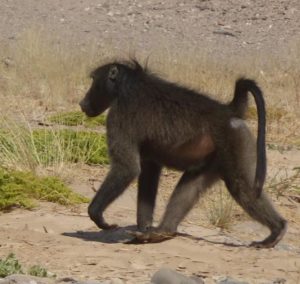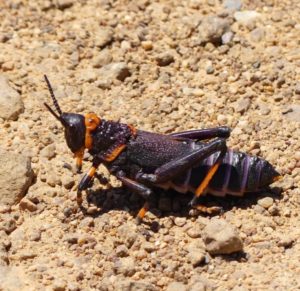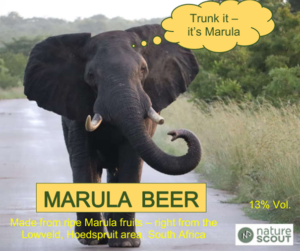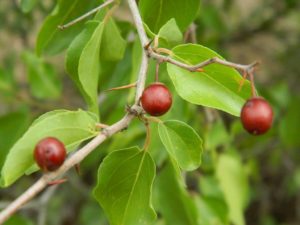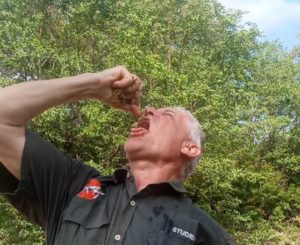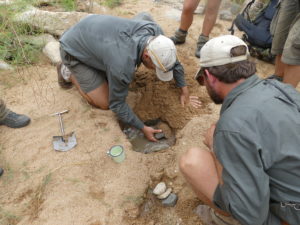South Africa
Top 10 rare snakes of Southern Africa
We often get asked what the rarest snakes in southern Africa are. This is hard to quantify, as some species may be locally abundant but in areas rarely visited. Other species may live underground and only become active above ground…
Traditional Remedies for Snakebite
A recent social media post claimed that, following a snakebite, chewing the bark of a cashew nut tree would neutralize the venom of the snake and ensure the full recovery of the victim. In many tropical African countries, cashew nut…
Small black snakes of Southern Africa
The small black snakes, which are found across Africa, are tricky to learn to identify. The danger lies in the fact that most species are harmless or mildly venomous, but can be easily confused with the venomous stiletto snakes. Many…
Advanced Rifle Handling (ARH) for Trail Guides
Hikes through natural areas in Southern Africa where dangerous game is present must be conducted with at least one, but usually two, armed trail guides. One is the “Lead Guide” or “1st Rifle,” and the second is called the “Back-up…
Vine snakes of Africa
Vine Snakes (previously called Twig or Bird Snakes) are widespread across Africa and are usually found in warm savannas and forested areas. There are currently four species and one subspecies of Vine Snake in Africa. The status and distinguishing features…
Giant snakes
Seeing movies like Anaconda let many people believe that there are monster snakes in jungles, some even exceeding 10 m in length. However, those stories have been doing the rounds for many years. So much so that the New York…
Holiday time and snakes
As the holiday season starts, many people will be returning to their family homes or are off on vacation. Snake season is in full swing with decent temperatures and sporadic rain. We are currently seeing a number of snake bites…
African milkbush causes painful blistering and inflammation
Euphorbia tirucalli (Euphorbiaceae) Common names: Ngego, ngewu, nlembonlembo (nlembo = finger) (Kongo), Euphorbe effilée, tirucalli (Fr), finger tree, finger euphorbia, African milkbush Description A leafless succulent shrub with cylindrical shoots, 2 – 8 m tall. All parts produce copious white…
Snake Teeth and Fangs
Most snakes have quite long, thin, sharp, and recurved teeth for catching and eating prey. These teeth are firmly anchored to the anterior bone on the lower jaw and the upper jawbone. Just like sharks and crocodiles, snakes replace their…
About snake home ranges and territories
We are often asked whether snakes have a specific territory. The word territory is perhaps not the correct term as it infers that snakes would protect this area to keep other snakes out of it. Snakes do not live in…
Why Bushmeat Snaring is the Silent Killer of the African Bush
Bushmeat snaring is a widespread hunting method in Sub-Saharan Africa. Public landscapes in this part of the world are often devoid of larger wild animals due to bushmeat hunting. This is so bad in some places that mammals – even…
Elephant diggings in dry riverbeds
African elephants (Loxodonta africana) require approximately 40 to 60 gallons (150 to 220 liters) of water daily to maintain their health. They obtain this water from various sources, including open water bodies and wells dug in sandy riverbeds. Additionally, elephants…
Preventing Snakebite in Southern Africa
Snakebite was recently recognized as a neglected tropical disease by the World Health Organization with about 20,000 snakebite fatalities reported every year in Africa. Subsequent morbidity affects far more people than that. In South Africa we have around 4 000…
Seekoraal plants in Southern Africa
Seekoraal is the Afrikaans term for the Salicornia natalensis plant, which belonged to the Sacocornia taxonomic genus before being reclassified under the Salicornia genus in 2017. Salicornia plants are succulent, halophytic (salt-tolerant) flowering plants in the Amaranthaceae family. They thrive…
Sourplum fruits for food and oil
Sourplums, which belong to the Olacacea family, comprise two species: the Blue Sourplum (Ximenia americana) and the Great Sourplum (Ximenia caffra). Blue Sourplum The Blue Sourplum is naturally distributed in semi-tropical and tropical countries worldwide, as shown on the map….
Weaver ants got interesting traits
Weaver ants of the genus Oecophylla consist of two different species. One species is Oecophylla longinoda, which occurs in equatorial, tropical African regions. The other species is Oecophylla smaragdina, distributed in tropical Asia and Australia. Both of them are also…
Sansevieria leaves and their uses
Sansevieria and its leaves were a genus of flowering plants originating in Africa and southern Asia. This former genus comprises approximately 70 species, commonly known by English names such as mother-in-law’s tongue, bow string hemp, snake plant, and snake tongue….
Chacma Baboons – a dangerous nuisance
Baboons are one of the largest-sized Old-World monkeys. Due to hybridization, their taxonomy is contested and overlapping. In Africa there are six species of baboons, and in Southern Africa lives one species, which is Chacma baboons (Papio ursinus). Chacma baboons…
Camelthorn as firewood
Camelthorn is an excellent firewood in Southern Africa. Its outer layer is light-colored sapwood, and its dark, hard, and heavy heartwood is inside. This hardwood produces long-lasting coals and high heat. Its northernmost distribution area extends from the Northern Cape…
Grey Foam-nest Tree Frogs
Grey foam-nest Tree Frogs (Chiromantis xerampelina) are called ‘Southern Foam-nest Tree Frogs’ or ‘Foam-nest Frogs’. Their native distribution range is Southern- and Eastern Africa, in various habitats. Minimum habitat requirements are temporary pools of water with trees overhanging branches. The…
Ghost Mantises are impressive insects
Ghost praying mantises (Phyllocrania paradoxa) fit perfectly into our new homepage section called ‘Wonders of Nature’ due to their unique appearance and behavior. They are a species of praying mantis, and four characteristics make them unique. These are an impressive…
Knobkerries at a Museum in Hluhluwe
Knobkerries are straight, wooden clubs with a knob on one end. Together with assegais (throwing spears), they are the symbols of various African nations. These two weapons are part of the South African Coat of Arms, introduced in April 2000….
Koppie Foam Grasshoppers
Koppie Foam Grasshoppers (Dictyophorus spumans) are indigenous to South Africa and prefer sparse and low vegetation on rocky outcrops. They are flightless and have some aposematic coloring, which are yellow or orange stripes on the warty thorax shield and stripes…
Determining cardinal points by trees
Determining cardinal points by trees in Southern African savannas (Southern Hemisphere) is a standard procedure. It is helpful in case one is lost, and the sun cannot be seen. At least one can determine where the cardinal points are. Cardinal…
Mopane worms – high protein food in Africa
Mopane worms (Instars of Gonimbrasia belina) are mainly found on Mopane trees (Colophosperma mopane) but also on Wild Syringa (Burkea africana), Zebrawood (Microberlinia Brazzavillensis) and others. However, Mopane trees are a highly dominant species in climates and areas suitable for…
Milkplum (Stamvrug) fruits grow directly out of the tree trunk
Milkplum (Englerophytum magalismontanum (Sond.) T.D.Penn). Common names: (Afr) Stamvrug. (Eng) Milkplum, Wild plum. (isiZulu) Amanumbela. (Northern Sotho) Mohlatswa. (siSwati) UmNumbela. (Tshivenda) Munombelo. (Xitsonga) Nombhela. Old name: Bequaertiodendron magalismontanum Distribution Milkplum is widely distributed from Central Africa to Botswana and Eastern…
Termite soil as building material
Termite mounds are primarily made of soil, excavated below the mound, and carried to the surface by these insects. They use the soil to construct the mound, forming it into various shapes depending on the termite species. The exterior of…
Determining wind direction in savannas
Determining wind direction is necessary when on a hunt or trail in Southern African wilderness areas. Besides being constantly aware of the direction of the wind, the relationship to the sun has to be checked all the time. Only when…
Safari toilet at Timbavati tented bush camp
A safari toilet is essential for any temporary tented camp in the wild. For a Trails Guide course at Timbavati Private Nature Reserve in South Africa, we had eight students, two mentors, and one cook, a total of seven tents…
Game trails towards water in African savannas
Larger herbivores in African savannas formed game trails by regular use over eons of years and many, many generations. These trails connect water sources and feeding and bedding areas within their home range. And for a few of them, they…
Chewing sticks for dental care in Southern Africa
Chewing sticks, or toothbrush sticks, were widely used in former times from Ethiopia down to the southern tip of Africa. Nowadays, plastic toothbrushes are commonly used, and chewing sticks are still commonplace only in very rural parts of this area….
Field dressing and cooking a puff adder
Puff adders (Bitis arietans) are widely distributed throughout Sub-Saharan Africa, except in dense rainforest areas and Madagascar. They have a tell-tale flat head with a straight line between the eyes, a thick body with chevron markings, and a stumpy tail,…
Bluebottle jellyfish – a stingy creature
The bluebottle jellyfish, also known as Physalia utriculus, is commonly found along the coasts of non-tropical regions bordering the Atlantic, Indian, and Pacific oceans. These creatures are not jellyfish but rather siphonophores composed of multiple organisms known as zooids. These…
Finding direction with Buffalo weaver nests
The Red-billed buffalo weaver (Bubalornis niger) is a common bird in parts of Southern Africa. These birds have the largest body size of all weavers and are common in dry woodland and savannas. Buffalo weavers have a peculiar trait when…
African termite alates for food
In Southern Africa, Harvester termite alates (Hodotermes spp.) and Mound-building termite alates (Macrotermes spp.) swarm within a specific area usually once a year. These alates are winged termites, which termite workers keep within certain chambers in the mound. They represent…
Safari footwear for hiking in African savannas
Proper safari footwear is essential for hiking in Southern African savannas. These savannas are defined by a lush grassy layer and a notable woody layer consisting of trees and shrubs, but neither dominates the biome. Depending on particular climatic conditions…
Spotted hyenas are successful hunters
Spotted hyenas (Crocuta crocuta) occur throughout sub-Saharan Africa. Exceptions are Central and West African rainforests, Southern grassland biomes, and further beyond the south. The density of a hyena population in a suitable habitat depends significantly on the density of the…
Spotted beauties: Leopards in Southern Africa
Leopards (Panthera pardus) have a wide distribution range in Sub-Saharan Africa, which, however, becomes increasingly fragmented due to human activities and habitation. In the Southern African region, within the Republic of South Africa, only about 20% of the land area…
Why are hippos dangerous on land?
Hippopotami of the species Hippopotamus amphibius (‘Hippos’) are widely distributed over Sub-Saharan African savannah biomes. They were declared a ‘vulnerable’ species, as over the last ten years, the population declined between 7% and 20%. In total, there were about 130,000…
Trunk it – it’s Marula beer!
Marula season in Southern Africa typically occurs in February of each year. When Marulas (Sclerocarya birrea) get ripe, they turn from green to yellow and fall from the female Marula trees. On the ground, they ripen fully and will start…
Natal Mahogany seed milk and its preparation
Natal Mahogany (Trichilia emetica) trees have got a dense canopy of dark green, glossy leaves, and a round outer shape of the tree silhouette. They preferably grow in moist places and riparian forests along drainage lines. Natal Mahogany is easy…
Buffalo thorn tree – an icon in Southern Africa
The Buffalo thorn tree (Ziziphus mucronata) is called in Afrikaans “Blinkblaar-wag-‘n-bietjie” for its shiny leaves and two thorns, which hold people back when getting caught by them. The shrub or tree has got distinctive zigzag branchlets with pairs of two…
Rumen fluid as an emergency drinking liquid
Rumen fluid is a greenish-colored liquid substance with an aromatic and slightly sour smell. It is uniformly distributed in the rumen of antelopes and mixed with grazing or browsing roughage, fermentation gases, and bioactive organisms. The rumen liquid primarily comprises…
Firewood from Red Bushwillows is excellent
In Southern Africa, fourteen species of Bushwillows belong to the Combretum family. Other trees of the same Combretum family are Clusterleaf species, Leadwood, and others. Interestingly, not all Combretum species are suitable for firewood, but some are excellent for that…
Greenthorn tree and its uses
The Greenthorn tree (Balanites Maugham) is easily recognizable in Southern Africa due to its triangular, fluted, or buttressed trunk. Its spines are green like its twigs and often forked. It is very spiny and challenging to climb. It mainly grows…
Double-banded Sandgrouse as water indicator
The Double-banded Sandgrouse (Pterocles bicinctus) is commonly and colloquially called by its abbreviation ‘DBSG’ in Southern Africa. Its main distribution area is the savanna biome, especially Mopani Bushveld. There are three more species of sandgrouses in Southern Africa, all having…
African buffalos are dangerous
Danger of buffaloes is overrated. The ‘Cape buffalo’ (Syncerus caffer caffer) as a subspecies of the ‘African buffalo’ (Syncerus caffer) is the typical Southern African savannah biome buffalo species. The denomination of ‘African Black Death’ was coined by trophy hunters,…
Recipe for disaster – elephant bulls in musth
Musth is a condition of elevated testosterone levels in the blood of elephants. African elephant (Loxodonta africana) bulls come into their first musth when they are between 15 – 17 years old. The length of the musth depends on the…
Spekboom leaves as vegetable in South Africa
Among the many edible South African plants, few are as remarkable as Spekboom (Portulacaria afra), a member of the Didiereaceae family. Known locally as the elephant bush, this hardy succulent is celebrated for its ecological benefits and, increasingly, for its…
Poisonous beauty: The ‘Elegant Grasshopper’
Aposematic coloration The ‘Elegant Grasshopper’ (Zonocerus elegans) occurs commonly throughout Southern Africa and is mentioned due to its aposematic coloration, typical for animals that want to announce that they are poisonous. And he is a poisonous grasshopper. In the case…
Water from elephant dung
Elephants are a kind of dung-producing machines In the wild, African elephants (Loxodonta africana) are foraging about 150 – 180 kg of plant material per day. And they also drink about 350 liters of water. Consequently, they excrete about 10 –…
Snares for poaching are a real problem
Many national parks, private game reserves, and game farms in Southern Africa are under heavy pressure from snares for poaching—not only rhino horn poaching but also indiscriminate poaching for meat. Internationally acting gangs from certain countries mainly organize rhino horn…
Digging for water by wells in sandy riverbeds
Where to dig One of the most essential techniques for finding drinkable water in Southern African natural environments is digging for water in areas that are holding water underground. These water-holding structures can be situated next to an open water…

















